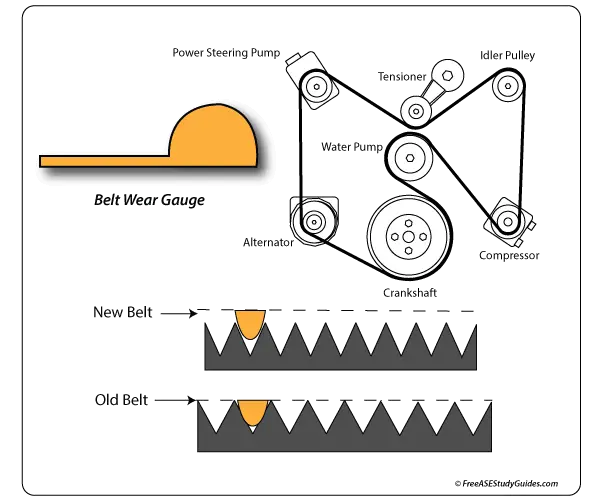Serpentine Accessory Belts

Vehicles manufactured before the early 2000s had neoprene belts. Today's EPDM belts last longer because the material used has more elasticity, making them less vulnerable to cracking.
Serpentine belts drive the alternator, power steering, compressor pulleys, and more, and because the belt snakes around these pulleys, a break in the belt results in multiple system failures.

Automotive accessory belts ride a little above the pulley to allow dirt and debris a pathway out of the belt system. As the belt wears, the gap between the pulley and the ribbed belt decreases. This loss of clearance prevents dirt and debris from leaving the groove. It's known as hydroplaning.
Normal wear: Serpentine belts crack and start to lose material when worn. A worn belt will begin to squeak or squeal, especially in the morning. A slight dew can form on the belt, causing a chirping sound.
Faulty bearing: Weak tensioners result in slippage, belt damage, and noise. Idler pulleys and tensioners contain bearings that squeal or lock up when worn. Remove the belt to ensure it's not the timing belt/chain or a related tensioner or bearing. If the noise goes away after removing the accessory belt, it's associated with the outer belt; if it's still present, the problem is internal. Use a stethoscope to find the noisy bearing.
Misalignment: The ribs in the pulley must align with the ribs on the belt. The crankshaft bolt fastens the crankshaft harmonic balancer flush with the timing belt sprocket, and pulley alignment is rarely an issue. Pulley removal is typical when replacing power steering pumps. When reinstalling a pulley, ensure it's aligned on the shaft to prevent side wear.

A belt wear gauge helps diagnose automotive accessory belts — even a 5% loss of material results in a loss in belt performance. It measures the depth of the belt. For example, the gauge raises above the ribs while measuring a new EPDM serpentine belt. Notice while measuring a worn belt that the gauge sinks into the belt. This diagnosis indicates a need for replacement.